Do Daisies Reseed Themselves? Exploring Their Natural Growth Cycle
Are you dreaming of a garden filled with vibrant colors and easy-to-grow flowers? Daisies might just be the perfect addition for you. These charming blooms not only brighten up your yard but also bring a touch of cheerfulness to any space. Yes, daisies do reseed themselves, often making it easier for these flowers to reappear each year without much effort on your part.
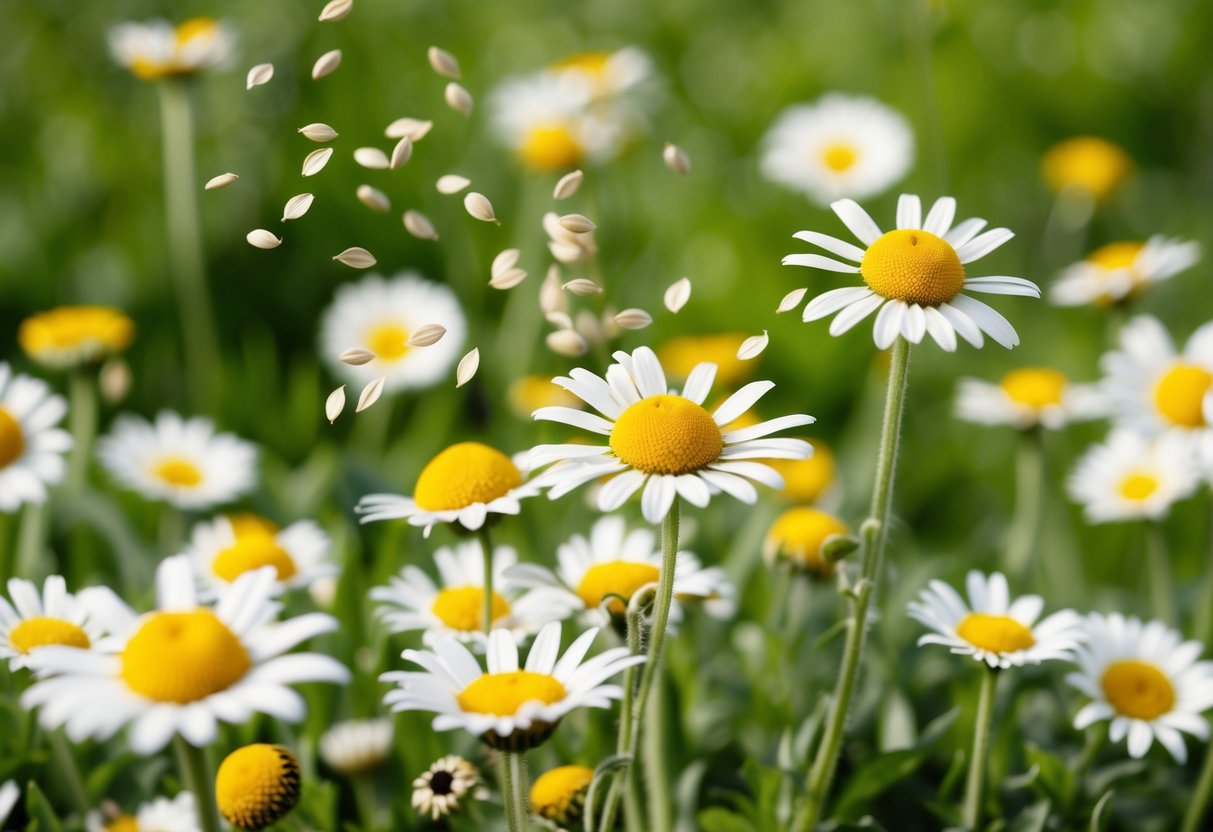
Imagine walking through your garden and being greeted by daisies sprouting up in unexpected places. The natural reseeding process means that once you’ve planted them, you might find new blooms popping up in different spots, adding an element of surprise to your gardening experience. This self-reliant trait makes daisies a wonderful option for those who love a low-maintenance approach to gardening.
With a little care, your garden can become a lively oasis filled with these delightful flowers. By understanding how daisies reseed, you can plan your garden to maximize their natural growth and enjoy a beautiful landscape year after year. Whether you’re an experienced gardener or just starting out, daisies can provide a charming and effortless way to enhance your outdoor space.
Understanding Daisy Reproduction
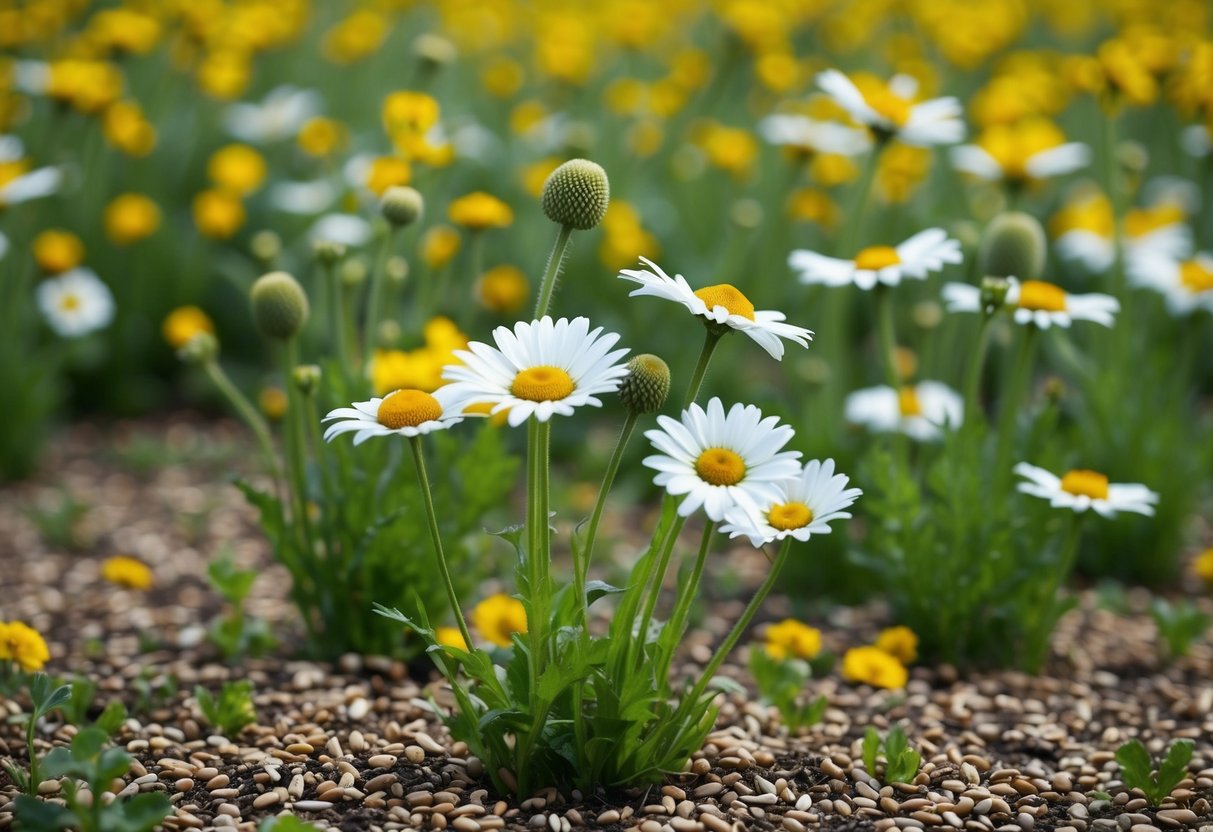
Daisies reproduce in a fascinating way, either by reseeding themselves or through spreading. This ensures their continued presence in gardens and wild spaces. Here, you’ll explore how these plants complete their life cycle and how they naturally expand their reach.
Lifecycle of a Daisy
Daisies have a lifecycle that varies depending on whether they are annuals or perennials. Annual daisies grow, flower, and die within one year. Their focus is on producing seed heads. Once pollinated, the daisy’s ovules turn into seeds, which are then dispersed naturally. Perennial daisies, like Shasta Daisies, grow back each year from their root systems.
As a daisy plant matures, it produces flowers that attract pollinators. You can encourage longer blooming by deadheading, or removing spent flowers. This allows energy to focus on new growth instead of seed production. However, if you want your daisies to reseed, you should allow some flowers to mature and form seed heads.
How Daisies Spread
Daisies have several ways to spread and reseed themselves. When the seed heads form on a daisy plant, the wind carries the seeds to different locations. These seeds can germinate where they land, giving rise to new plants. It’s a natural technique that helps the plant cover more ground over time. This is why you often find daisies growing in clusters.
Shasta Daisies are also known to spread through their roots, forming clumps that can gradually widen. For gardeners, knowing how daisies spread is essential, as it helps manage their growth in garden settings. Ensuring proper spacing can prevent daisies from crowding out other plants, while allowing them to multiply naturally.
Planting and Growing Conditions
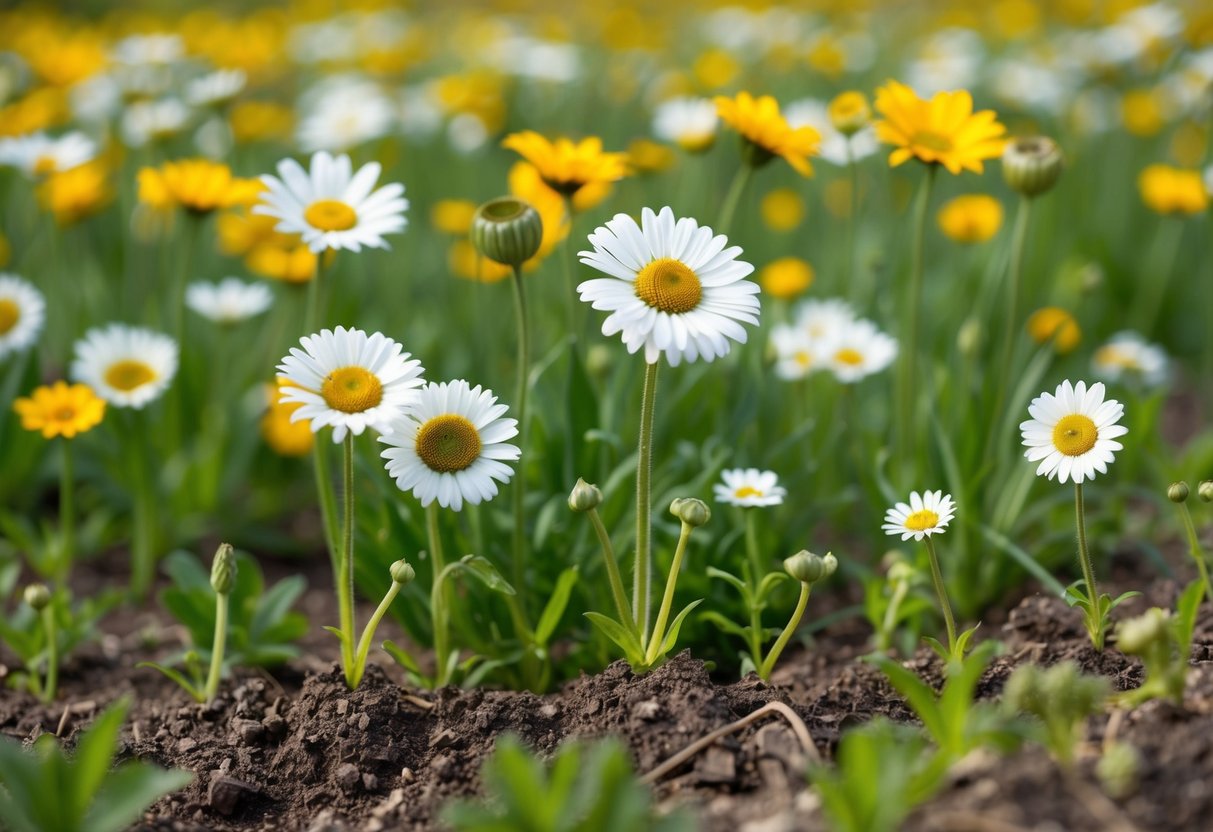
Daisies thrive in specific conditions that help them grow strong and healthy. Paying attention to soil, sunlight, temperature, and watering needs will ensure your daisies flourish.
Soil Requirements
Daisies prefer well-draining soil. When planting, choose soil that allows excess water to flow away, preventing roots from sitting in water. You can add sand or perlite to improve drainage if your garden soil is dense.
Incorporating organic matter like compost can enhance the soil’s structure and nutrients. This not only improves growth but also encourages better blooming. Keep the soil moist but not soggy; this balance helps daisies develop a strong root system. Adding a layer of mulch can help retain moisture and keep the soil cool.
Sunlight and Temperature
Daisies generally need full sun for optimum growth. Aim for at least six hours of direct sunlight each day. They can tolerate partial shade, but may not bloom as profusely.
Temperature is also crucial. While daisies are hardy, they grow best in moderate climates. Extreme temperatures, whether hot or cold, can stress the plant. Protect them from intense midday heat by providing some light shade if necessary. If you live in a particularly hot area, morning sun and afternoon shade might be ideal for your daisies.
Watering and Humidity Needs
Consistent watering is essential for daisies but avoid overwatering. Water them until the soil is moist, yet ensure the water doesn’t pool at the roots. Checking soil moisture regularly can help you know when to water next.
Daisies tolerate average humidity levels well. They don’t usually require extra misting or increased humidity. However, during dry spells or in very hot climates, you might need to water them more frequently. Maintaining a balance where the soil remains moist, but not saturated, is key to healthy growth. Using mulch can assist in conserving soil moisture, especially during warmer months.
Daisy Varieties and Their Traits
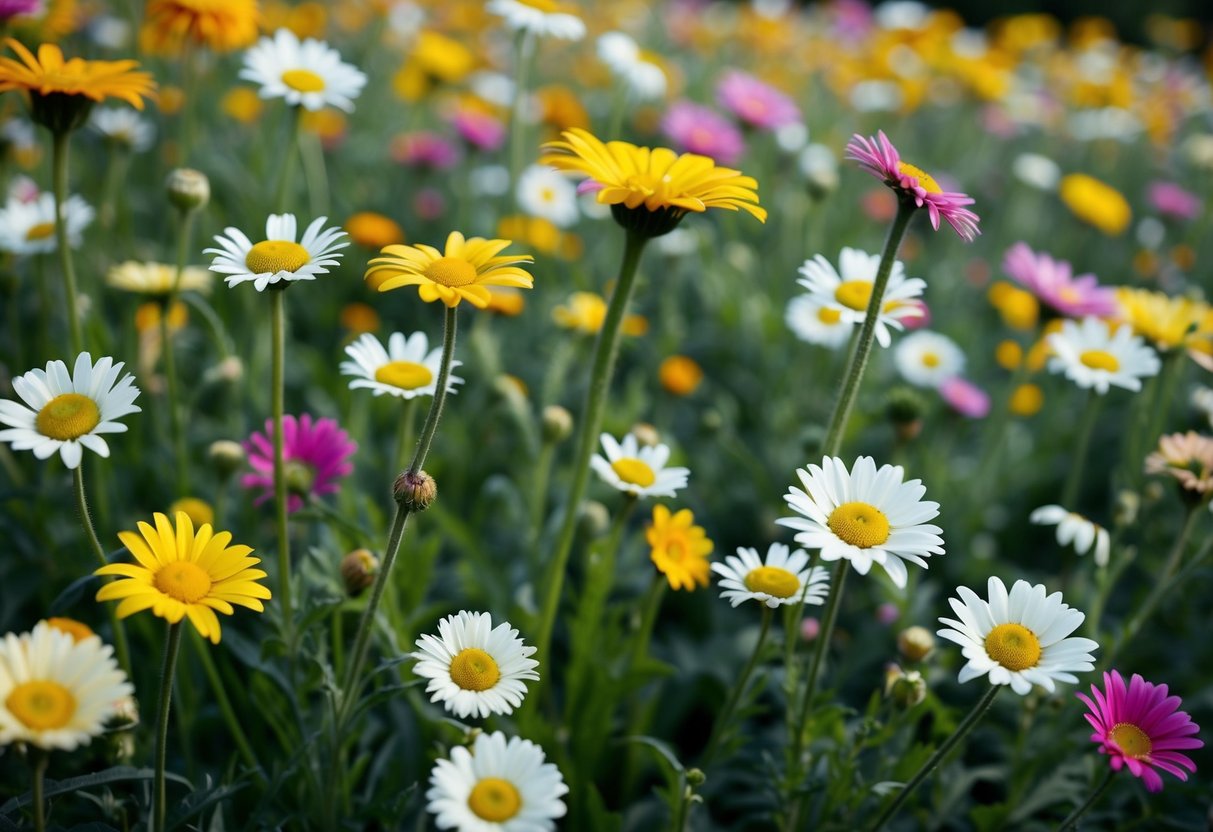
Daisies come in various forms, each with unique features that make them stand out. Some types, like Shasta and Painted daisy varieties, are loved for their vibrant colors and easy care.
Shasta Daisies
Shasta daisies are popular garden perennials. They have classic white petals and a bright yellow center, which give them an iconic appearance.
These daisies can grow up to 3 feet tall and are known for their resilience. They thrive in full sun and well-drained soil. Shasta daisies bloom in summer and can attract pollinators like bees and butterflies to your garden. You can enjoy their blooms year after year, as they are capable of reseeding themselves in the right conditions.
Painted Daisies
Painted daisies, also known as Tanacetum coccineum, bring a burst of color to any garden. They come in shades ranging from bright pink to deep red. Native to southwest Asia, these daisies have feathery leaves and can grow to about 2-3 feet tall.
They prefer cool climates and can tolerate partial shade. Painted daisies are known for their ability to repel insects, making them a practical choice for home gardens. With proper care, these daisies can also reseed themselves, ensuring continual beauty without much effort from you.
Other Popular Daisy Species
There are many other daisy species that add charm to gardens. Gerbera daisies, for example, are known for their large, vibrant flowers in colors like orange, yellow, and red. Originating from South Africa, Gerbera daisies prefer warmer climates and need lots of sunlight.
Oxeye daisies are another variety that is easy to grow. They are well-adapted to different soil types and can often be found along roadsides and fields. These daisies are quite hardy and can spread quickly if not controlled. Each daisy species brings something special to a garden, making them beloved by many gardeners around the world.
Care and Maintenance for Healthy Daisies
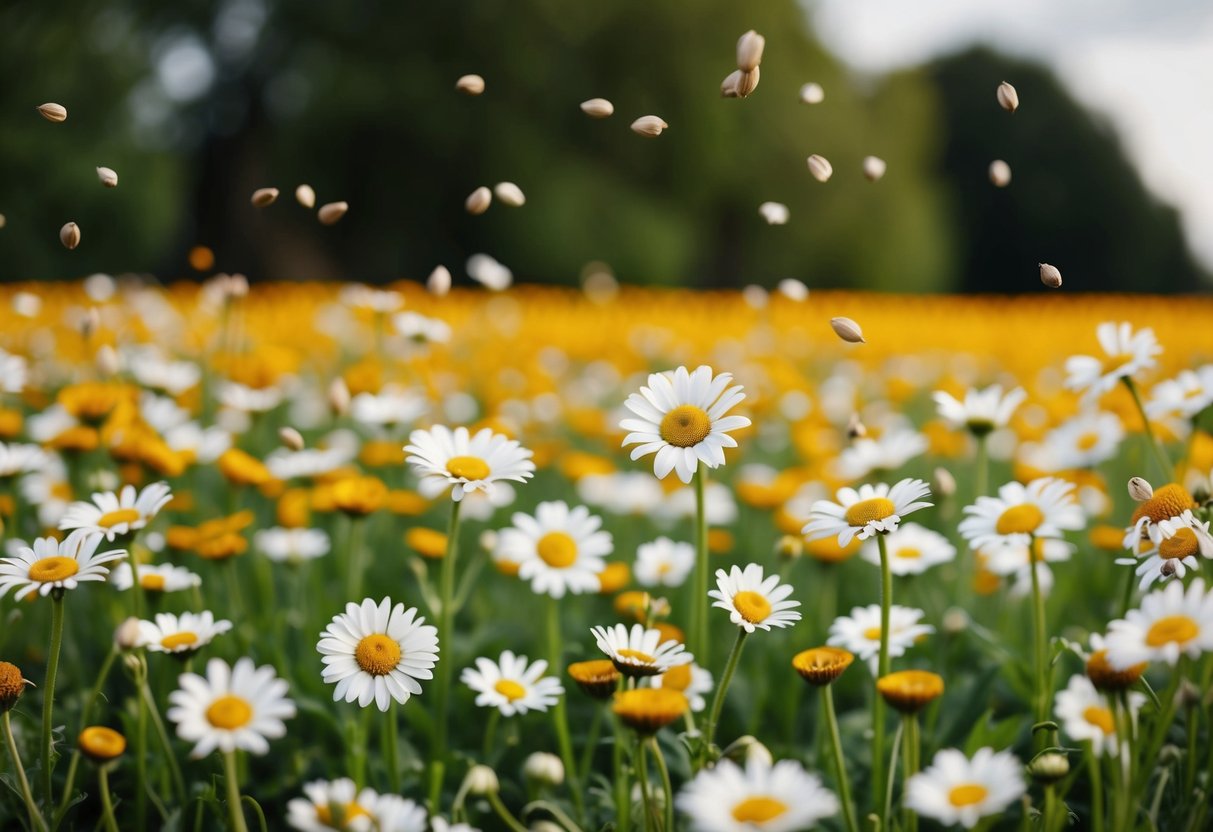
Growing daisies requires attention to fertilizing and mulching, keeping pests and diseases at bay, and managing their growth through division. Each aspect helps ensure vibrant blooms and healthy plants all season long.
Fertilizing and Mulching
For the best daisy blooms, use slow-release fertilizer. Applying fertilizer in early spring works well. It’s also a good idea to add compost or well-rotted manure to enrich the soil. These add nutrients and improve moisture retention.
Mulching helps keep moisture and temperature levels steady. Use organic mulch, like shredded bark, which breaks down and improves soil quality. Just make sure to leave some space around the base of the plant to prevent rot.
Managing Pests and Diseases
To protect your daisies, regularly check for common pests like aphids and slugs. Handpicking or spraying them off with water may help if the problem is minor. For more severe infestations, organic insecticidal soap can be effective.
Diseases such as powdery mildew are also a threat. Ensure your plants have good air circulation to reduce these issues. Removing any affected leaves can prevent the spread of disease. Keeping your garden tidy and free of debris helps too.
Division for Growth Control
Over time, daisies can grow quite large. To manage their size, consider dividing your plants. It’s best to do this every few years in the early spring or fall. Use a sharp tool to split the plant into smaller sections, each having a strong root system.
After division, replant in well-draining soil and water thoroughly. This not only keeps your daisies at a manageable size but also encourages fresh growth and more vibrant blooms. Regular division extends the life of your daisies and ensures a flourishing garden year after year.
Harvesting and Propagating Daisy Seeds

Harvesting daisy seeds is an easy way to grow more of these beautiful flowers. By properly collecting and storing seeds, you ensure they stay viable for future planting. Growing daisies from seeds is satisfying as you watch your garden fill with blooms.
Collecting and Storing Seeds
To start, let the daisy flower heads dry out completely on the plant after their bloom time. Once they turn brown, gently pick or snip off the heads. Hold them over a paper bag and shake or twist the heads to release the seeds.
Clean the seeds by removing any plant debris. A good tip is to lightly blow across the pile to separate the two. Once cleaned, place the seeds in a paper envelope. Store them in a cool, dry place away from direct sunlight. Proper storage helps maintain the seeds’ ability to germinate later.
Growing Daisies from Seed
Begin by preparing a seed starting mix for the seeds. Fill small pots or seed trays with the mix, and lightly press the seeds into the soil just below the surface. Then, water gently to keep the soil moist but not soaked.
Daisies can also be directly sown outdoors after the last frost. Give each seed enough space, about six inches apart, to allow for growth. Keep in mind that growing from seed is a slow process, but with patience, you’ll see small plants sprouting.
Consistent water and care result in strong seed germination. Before long, your garden will burst with cheerful daisies from your own seeds.







